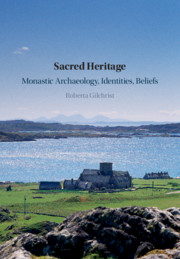Book contents
- Sacred Heritage
- Sacred Heritage
- Copyright page
- Dedication
- Contents
- Figures
- Tables
- Preface
- One Sacred Values: Medieval Archaeology and Spiritual Heritage
- Two Monastic Archaeology and National Identity: The Scottish Monastic Experience
- Three Spirit, Mind and Body: The Archaeology of Monastic Healing
- Four The Materiality of Magic: The Ritual Lives of People and Things
- Five Monastic Legacies: Memory and the Biography of Place
- Six Sacred Myths: Archaeology and Authenticity
- Bibliography
- Index
- References
Bibliography
Published online by Cambridge University Press: 20 December 2019
- Sacred Heritage
- Sacred Heritage
- Copyright page
- Dedication
- Contents
- Figures
- Tables
- Preface
- One Sacred Values: Medieval Archaeology and Spiritual Heritage
- Two Monastic Archaeology and National Identity: The Scottish Monastic Experience
- Three Spirit, Mind and Body: The Archaeology of Monastic Healing
- Four The Materiality of Magic: The Ritual Lives of People and Things
- Five Monastic Legacies: Memory and the Biography of Place
- Six Sacred Myths: Archaeology and Authenticity
- Bibliography
- Index
- References
Summary
- Type
- Chapter
- Information
- Sacred HeritageMonastic Archaeology, Identities, Beliefs, pp. 219 - 246Publisher: Cambridge University PressPrint publication year: 2020
- Creative Commons
- This content is Open Access and distributed under the terms of the Creative Commons Attribution licence CC-BY-NC-ND 4.0 https://creativecommons.org/cclicenses/



